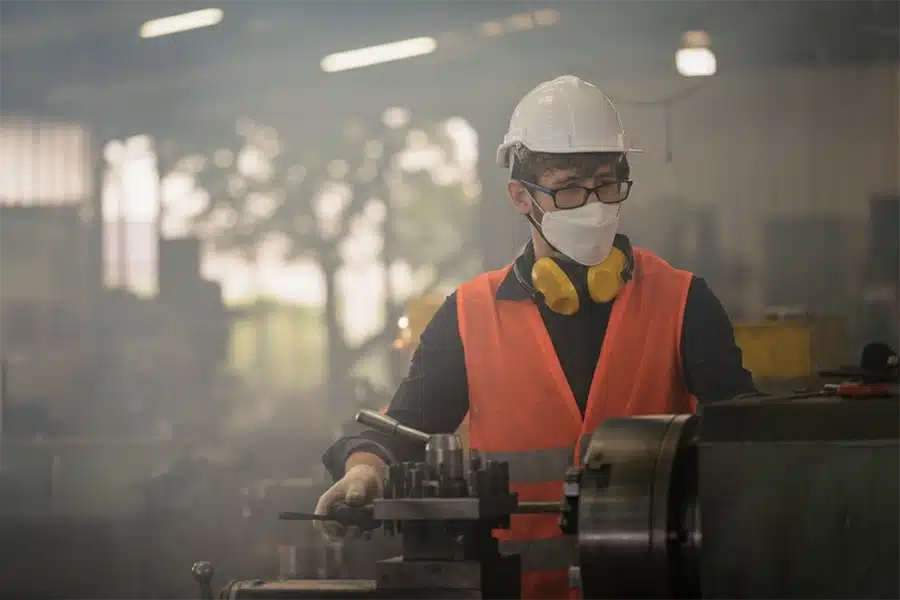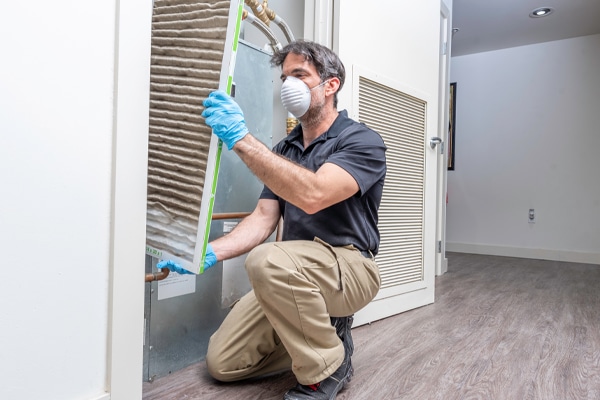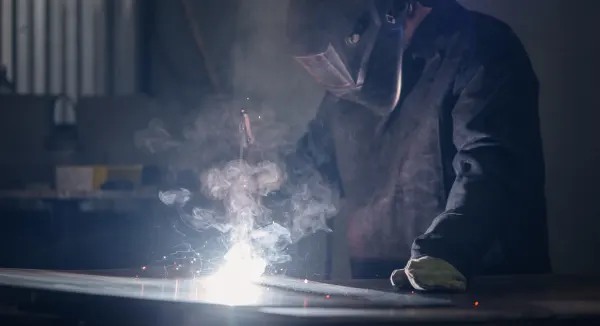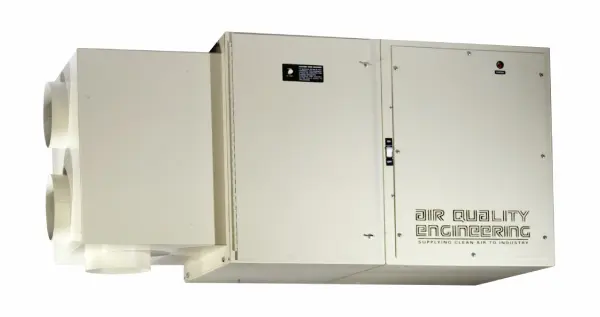Speak to an Air Purification Expert
Speak to an Air Purification Expert
Air Filtration Industry Articles, News And Resources
Coolant Mist Control: Key Considerations for Choosing the Right Technology for Your Shop
September 23rd, 2025 | Posted in Air Cleaners

Coolant Mist Control: Key Considerations for Choosing the Right Technology for Your Shop For decades, dealing with coolant mist has been a challenge for facility managers, supervisors, and machine operators. In the 1970s, many machine shops were filled with a visible haze of coolant mist. Operators wore aprons soaked in mist, shop floors were slick, and in some cases, coolant even dripped from the ceiling. Today, we know better. Coolant mist is a serious airborne…
Continue Reading »Coolant Mist Health Risks What Every Facility Manager Should Know
May 29th, 2025 | Posted in Air Cleaners

Coolant Mist Health Risks What Every Facility Manager Should Know Industrial processes like metalworking and machining generate high amounts of coolant mist, often referred to as metalworking fluid (MWF) mist. While these fluids improve efficiency and protect equipment, research shows that exposure to coolant mist can pose significant and often under-recognized health risks, including increased cancer risk. This is why it is essential to understand not only the dangers, but also how oil mist extraction…
Continue Reading »Applications for Source Capture Vs. Ambient Air Capture
May 7th, 2025 | Posted in Air Cleaners

Exposure Limits: ACGIH TLVs® and OSHA PEL Explained In a previous blog we discussed some of the aspects of monitoring for occupational exposures to airborne contaminants. The focus of that blog was a screening technique that measures “Particulates Not Otherwise Classified (PNOC) as a surrogate for coolant mist generated by machining operations. We also noted that the OSHA Permissible Exposure Limit (PEL) for PNOC is 5 mg/m3. This raises the question: “What is an…
Continue Reading »Applications for Source Capture Vs. Ambient Air Capture
May 7th, 2025 | Posted in Air Cleaners

There’s coolant mist in the shop air. There’s been coolant mist in the shop air since we’ve been using coolants and especially so now that high pressure coolants have become more common. Until now we haven’t thought much about it but if you’ve been reading the previous blogs on this site, you know that here are potential health hazards associated with many of the components of coolant mist. We have to wonder if there isn’t…
Continue Reading »Applications for Source Capture Vs. Ambient Air Capture
March 7th, 2025 | Posted in Air Cleaners

At Air Quality Engineering, we understand that air cleaning isn’t free. The less air you have to clean, the less money you’ll spend keeping the plant air breathable. Since source capture (also called “local exhaust ventilation” in the textbooks) allows one to capture and clean the minimum amount of air necessary to achieve that goal, source capture is the preferred solution when it can be implemented. One of the better examples of source capture is…
Continue Reading »HEPA Filtration for Welding Fume: Why Bother?
November 4th, 2024 | Posted in Welding

The short answer to the question posed above is that welding fume has been classified as a human carcinogen with the lung as the target organ. In view of that information, using the most effective filtration is obviously good sense. We have long known that prolonged over exposures to welding fume places welders at increased risk for respiratory system ailments, particularly lung cancer[i]. Hexavalent chromium (Cr(VI)) and nickel compound exposures have long been identified as…
Continue Reading »How To Keep Indoor Air Safe During Wildfires
September 24th, 2024 | Posted in Air Cleaners

Health Effects Wildfire smoke is more than just malodourous: it is a real health hazard. According to the US Environmental Protection Agency, “Wildfire smoke is a mixture of air pollutants of which particulate matter is the principal public health threat. Extensive scientific evidence has demonstrated health effects in response to short-term (i.e., daily) particulate matter exposure ranging from eye and respiratory tract irritation to more serious effects, including reduced lung function, pulmonary inflammation, bronchitis, exacerbation of asthma…
Continue Reading »Success Story: How We Improved the Indoor Air Quality of a Customer’s Cigar Room
September 20th, 2024 | Posted in General

Everyone deserves to breathe in clean, fresh air, and at Air Quality Engineering, we work hard to ensure that our customers receive the most cost-effective, high-quality air cleaners and filtration systems that will meet their specific needs. Whether you’re considering an air cleaner for your home, an office, a welding workspace, or even a medical setting, we offer products for every environment.
Continue Reading »What Works Best For Mist Collection?
August 21st, 2024 | Posted in Air Cleaners, General

There’s a variety of mist collection equipment available for people to choose from; media, centrifugal and electrostatic precipitators being the most popular. To get the results you want for your work environment, the question you should be asking is what works best for “my” application. But there’s not always an easy answer to that.
Continue Reading »The Essential Role of Mist Collectors in Industrial Settings
August 2nd, 2024 | Posted in Air Cleaners

NIOSH recommends using mist collectors engineered for the operation and specific machine enclosures. WHY? A question our air quality technicians get asked is: “What is so bad about coolant mist that we should install mist collection equipment?” A perfectly rational question, it led to spending a little time Googling Safety Data Sheets for Metal Working Fluids. Although in the shop we use the term “coolant,” in the scientific literature, the term most frequently used for…
Continue Reading »
